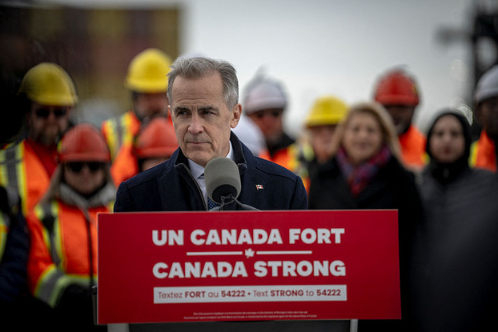The return of Donald Trump has forced a reckoning in Canada with the potential to reshape the Canadian economy — including the direction its energy flows.
“We will need to do things previously thought impossible, at speeds we haven’t seen in generations,” Prime Minister Mark Carney said last week, as he declared Canada’s traditional economic relationship with the United States “over.”
During his first week in office, Carney gathered Canada’s premiers and got them to agree that in the face of Trump’s tariffs, they will remove all internal trade barriers by Canada Day on July 1. The Canadian Chamber of Commerce, among others, has estimated those barriers diminish Canada’s GDP by 4 percent annually.
Carney’s plan includes trying to make it seamless for people and products to flow east-west, rather than south to the U.S. That includes energy, especially the clean kind — most electricity, nuclear power, as well as wind and solar.
On Monday, Conservative Leader Pierre Poilievre promised to create a Canada First National Energy Corridor, a pre-approved corridor for pipelines, transmission lines and rail lines.
People in Canada’s clean energy sector have been advocating for years for the country to think big and do more to leverage an abundance of clean power.
POLITICO spoke to Philippe Dunsky, the president of a Montreal-based consultancy that bears his name. Dunsky recently wrapped up his chairmanship of the federal government’s Clean Electricity Advisory Council, delivering a report last June to Natural Resources Minister Jonathan Wilkinson called “Powering Canada.” The report offered a blueprint to deliver an essential thing to Canadians: clean, affordable electricity created within their own country, to heat their homes and power their lives.
The report received scant attention. But now, thanks for Donald Trump’s economic threats, its thesis has become a central plank in Canada’s economic pivot away from the U.S.
Here is a transcript of our interview, edited for length and clarity:
We have problems getting electricity to flow east to west in this country. Can you explain the basics of the problem?
The problem is a natural one — there’s greater demand and concentration of demand south, than east-west. We’re a less dense country [compared to the U.S.]. So naturally, if we do nothing, our power goes south. If we’re deliberate about it, we can do something.
In your report for Energy and Natural Resources Minister Jonathan Wilkinson, you talked about the need to stitch the country together a little better. Can you summarize what you recommended?
I can start with what we’re not recommending. This is not about an east-west power line. That’s kind of a railway analogy.
Continue reading





Discussion about this post